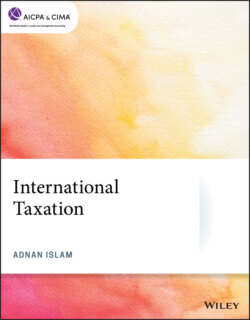Читать книгу International Taxation - Adnan Islam - Страница 35
Foreign branch income limitations and repeal of ACTB exception
ОглавлениеUnder the TCJA, foreign branch income is not eligible for reduced tax rates otherwise available for foreign-derived income (for example, FDII under new Section 250 for foreign-derived intangible income), and the TCJA greatly limits the use of foreign income taxes paid on branch income as a credit.
With respect to FDII, the preferential tax rate on deemed intangible income attributable to export activities presumably is intended to encourage U.S. corporations to keep (or relocate) production functions, assets, and activities within the United States. Under the new law, income earned from an active business conducted offshore would generally be taxed at full (ordinary income tax) U.S. rates if undertaken in the form of a foreign branch, while if conducted through a CFC, the majority of the income may still be taxed in the United States under the global intangible low-taxed income (GILTI) regime but would be eligible for the reduced GILTI effective tax rate (for example, 10.5% to 13.125%). It is worthwhile to note the incongruous treatment for business activities conducted through a foreign branch as opposed to a CFC whose U.S. shareholders can benefit from the lower effective GILTI tax rates.
Prior to TCJA, Section 367(a)(3) provided an exclusion for transfer of assets (other than stock) if the assets are used in the active conduct of a trade or business conducted outside the United States. The TCJA repeals the active trade or business exception of Section 367(a)(3) for transfers made after December 31, 2017.
The TCJA requires domestic corporations to recapture foreign branch losses in certain foreign branch transfer transactions. If a domestic corporation transfers substantially all the assets of a foreign branch (within the meaning of IRC Section 367(a)(3)(C)) to a 10%-owned foreign corporation of which it is a United States shareholder after the transfer, the domestic corporation must include in gross income the “transferred loss amount” (TLA) with respect to such transfer.
The TLA is defined as the excess (if any) of
the sum of losses incurred by the foreign branch and allowed as a deduction to the domestic corporation after December 31, 2017, and before the transfer, over
the sum ofany taxable income of such branch for a tax year after the tax year in which the loss was incurred, through the tax year of the transfer, andany amount recognized under the Section 904(f)(3) “overall foreign loss recapture” provisions on account of the transfer.
The amount of the domestic corporation’s income inclusion under this provision would be reduced by all gains recognized on the transfer, except gains attributable to BLR under Section 367(a)(3)(C).
